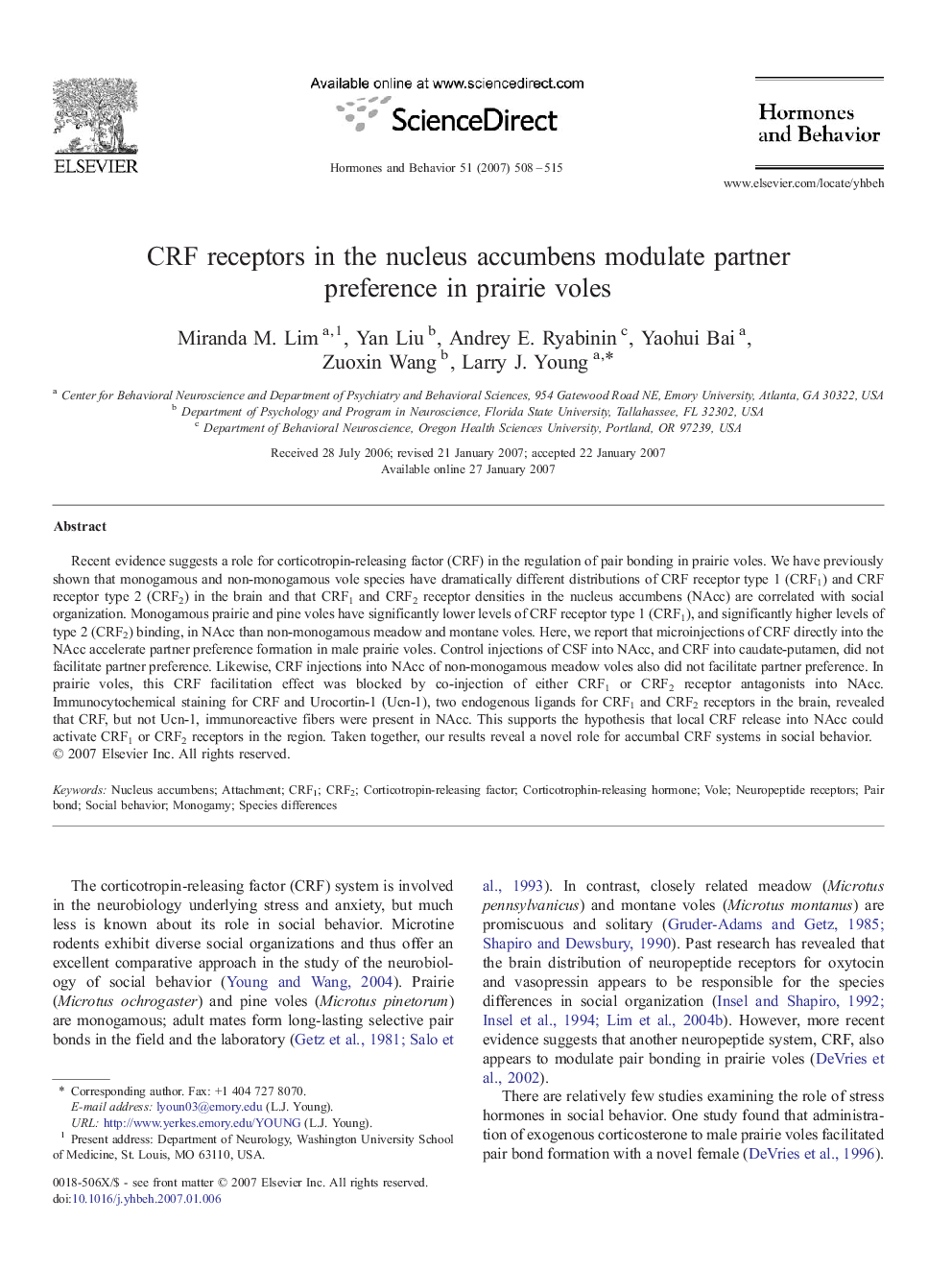| Article ID | Journal | Published Year | Pages | File Type |
|---|---|---|---|---|
| 323818 | Hormones and Behavior | 2007 | 8 Pages |
Recent evidence suggests a role for corticotropin-releasing factor (CRF) in the regulation of pair bonding in prairie voles. We have previously shown that monogamous and non-monogamous vole species have dramatically different distributions of CRF receptor type 1 (CRF1) and CRF receptor type 2 (CRF2) in the brain and that CRF1 and CRF2 receptor densities in the nucleus accumbens (NAcc) are correlated with social organization. Monogamous prairie and pine voles have significantly lower levels of CRF receptor type 1 (CRF1), and significantly higher levels of type 2 (CRF2) binding, in NAcc than non-monogamous meadow and montane voles. Here, we report that microinjections of CRF directly into the NAcc accelerate partner preference formation in male prairie voles. Control injections of CSF into NAcc, and CRF into caudate-putamen, did not facilitate partner preference. Likewise, CRF injections into NAcc of non-monogamous meadow voles also did not facilitate partner preference. In prairie voles, this CRF facilitation effect was blocked by co-injection of either CRF1 or CRF2 receptor antagonists into NAcc. Immunocytochemical staining for CRF and Urocortin-1 (Ucn-1), two endogenous ligands for CRF1 and CRF2 receptors in the brain, revealed that CRF, but not Ucn-1, immunoreactive fibers were present in NAcc. This supports the hypothesis that local CRF release into NAcc could activate CRF1 or CRF2 receptors in the region. Taken together, our results reveal a novel role for accumbal CRF systems in social behavior.
